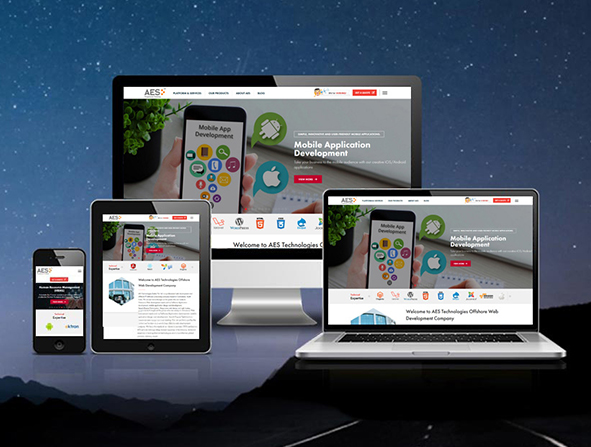 Responsive Site
Responsive SiteResponsive design is like a fluid which occupies only the device space and provides a user-friendly interface for content consumers; it responds to the screen size, orientation, user interaction, platform and environment.
The Website is commonly accessed on desktops, smartphones, and tablets; each screen size differs from one another, so it is difficult to maintain different websites for different devices. To make things easier, it is best to convert your existing static website into a responsive one which adapts with almost all devices used by your customers.

The best benefits of converting your website as responsive are:
Converting into a responsive website takes time for its transition, first it is a important to choose the right layout or framework for your website.Some of the exciting frameworks like twitter bootstrap and foundation lets you to alter the existing code instead of building the website from the scratch.
Converting your website code needs to change your fixed width into a responsive layout; this should be done by focusing on CSS style rules.
It is best to identify the components that you need to change as responsive — to perform the conversion process faster. By modifying the sections of page by page, you can obtain a responsive layout for your website.
Conversion of your website code will provide a responsive layout which can be tested in different screen sizes. You can check in iOS or android smartphones, tablets and in different desktops screens. Conducting SEO site checkup using online third party tools also help you to find the mobile-friendliness of your website. By finding the printer-friendly styles in your website can able to know the responsiveness of your website.
The text in website is the responsive element, but infographics, images other media elements should be considered to make the website responsive. Keeping the width size of images as 100% and height auto will automatically adjust the images according to the device size – there are also other ways in making the images responsive.
Even though the content is responsive, it is important to change the font size and pixels to make it adapt to the different device screens – altering pixels should be considered if you have a fixed width. The responsive font size that relates to the parent container width will adapt the content within the client device screen.
With the assistance of expert design engineers, you can convert any website into responsive within a shorter time period. As the mobile users are consistently increasing, the sooner the better you convert your website to retain your customers.
First Name *
Last Name *
Organization
Email Address *
Phone *
Message or Project Description